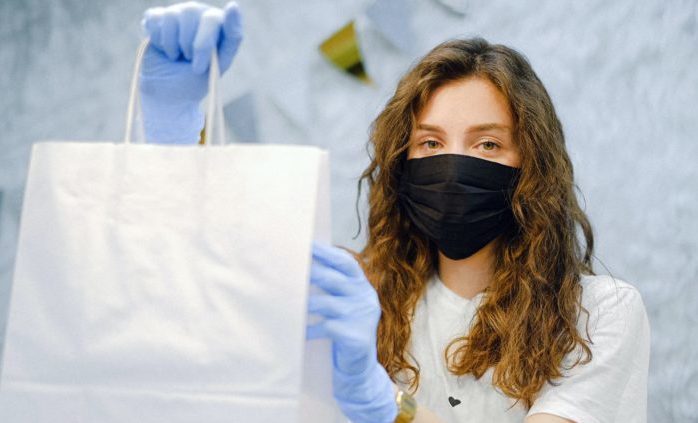Originally published in Morning Consult
By Dan Greenleaf
America’s most vulnerable populations — particularly the poor, the sick and the elderly — faced a daily struggle to get food even before COVID-19. Now their numbers and needs are surging due to the economic freeze even as the virus adds a whole series of logistical challenges around food supply that our society is ill-prepared to meet.
This is the “last mile” food problem that rarely gets talked about but must be solved, because millions of lives are at stake.
Food banks across the country are overwhelmed by a level of demand they weren’t set up to deal with. The scenes this month at a food bank in San Antonio that was swamped by an estimated 10,000 families brought home the scale of the crisis, though versions of that same scenario have played out across the country.
At the same time, any crowding or personal interactions around getting food raise the risk of prolonging and worsening the pandemic. Supermarkets adding “senior hours” to protect the elderly from crowds is a helpful move, but it doesn’t solve the larger problem — vulnerable people who can’t get to the grocery store without public transportation or help from neighbors.
The federally funded Meals-on-Wheels service, a crucial source of food for around 2.5 million needy seniors, is in dire need of volunteers because the vast majority of those who usually transport the meals are over 65 and themselves at high risk from the virus.
With the current systems under strain, there’s an urgent need to come up with creative ways to solve this “last-mile” food problem for needy populations while reducing the risks of contagion. Some initiatives have already sprung up at the state level, such as California’s move to partner with FEMA and restaurants to provide three meals a day to elderly residents. Such models show the potential and the need for public-private partnerships to fill the gaps on a greater scale.
Another example is in New Jersey, where state officials have partnered with medical transportation providers and food banks to ensure that Medicaid recipients can get the food they need without leaving home.
Before the pandemic started, the network of transport providers had been contracted to ferry mostly elderly patients to and from doctor appointments. Overnight, that business disappeared as social distancing rules came into force and hospitals canceled low-priority appointments to devote themselves to the coronavirus response. The providers, ranging from mom ‘n’ pop operations to larger firms with dozens of vehicles, lost a big chunk of their volume while still having to cover most of their operating expenses.
The transport providers were an idling asset that needed a cash infusion. Luckily, state leaders were able to recognize that the virus had created an important new value in them: ferrying food instead of people. For the past week, for example, transport operators in New Jersey’s Middlesex and Hudson counties have picked up boxes set aside by food banks and delivered them to Medicaid recipients who would otherwise struggle to get food due to their physical condition or a lack of vehicle access. Communications and logistics have been facilitated by an experienced call center staff who normally support the health-transport operation. And the pilot project may soon expand from those two counties to the entire state.
Although the system is still in its infancy, it’s already yielded valuable lessons that should help it scale up and inform other partnerships that could be set up nationwide. At a time when all of us – our entire economy, really – is self-organizing to coordinate in new ways due to the quarantine, this effort provides some good lessons on how to rewire services we previously took for granted.
The first lesson is timing. State officials have a built-in resistance to change in normal times, but desperation breeds creativity. New Jersey was one of the first states to be hit hard by the virus and so was receptive in March to innovative ideas. Many other states wouldn’t have been so willing at that time, but a lot more are now realizing they have the same needs. Having strong existing connections with the state apparatus also provides a big head-start compared to cold-calling.
When you have their attention, be prescriptive with the problem you can help them solve rather than asking open-ended questions about what they most need. The answer to the latter question right now is almost always going to be more ventilators and testing.
Another lesson has been to start small. The New Jersey project began with just 50 boxes per day being set aside by food banks at the county level. The plan is to scale up to 100 and beyond in the coming days, but starting small gave operators the chance to learn from problems and fine-tune issues before they had major consequences.
Third, keep it simple. The goal of the service is to meet basic needs, not to provide a customized service like Uber Eats or DoorDash that would add complexity and stress for drivers and food-bank workers. For that reason, each box of food is standardized to include staples like rice, beans, cooking oil and a milk product. This keeps it simple for stressed food bank volunteers who can’t handle a complicated delivery manifest.
The hope is that partnerships like this and the innovative services they provide will to some extent outlast the pandemic. Just as the coronavirus is likely to lead to lasting changes in the way we work, learn, and exercise, it has the potential to change the way we support those who need our help the most.
Dan Greenleaf is CEO of LogistiCare.

